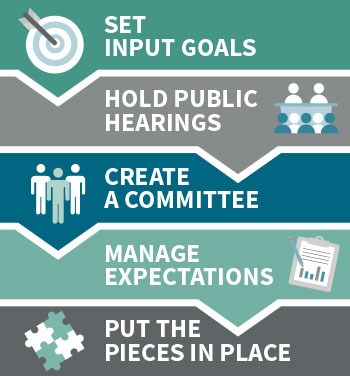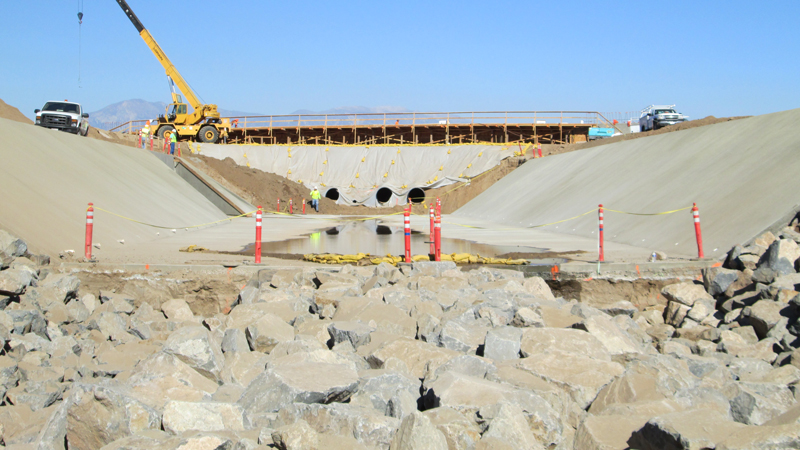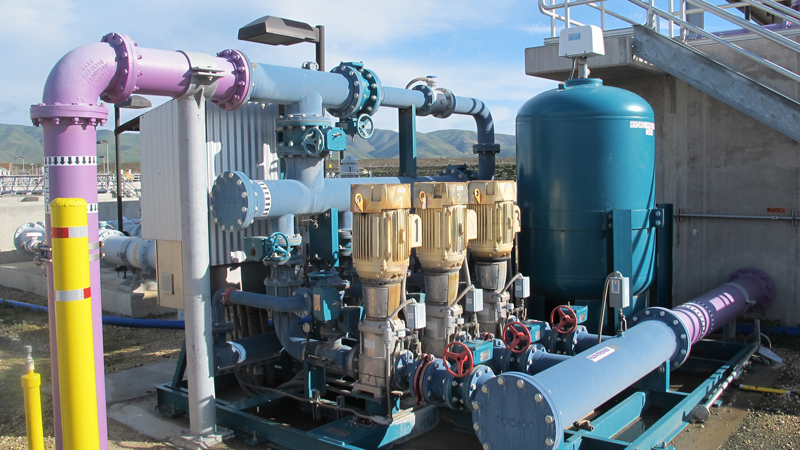5.3 minute read
March 23, 2017
Many water agencies struggle with a daunting challenge: how to plan and pay for the tremendous backlog of infrastructure replacement projects. Thankfully, there are more options than ever to obtain such financing. Yet there’s one key step to securing support for this funding that utilities may overlook at their own peril: stakeholder outreach.
When you involve stakeholders—typically customers, regulators and decision makers —in your planning and take the time to understand their priorities, tolerances and expectations, your decisions become more realistic and more achievable. Their frequent input and buy-in increases your agency’s chances of adopting funding (rate) proposals to keep up with infrastructure needs.
Since most utility staff are stretched to the limit, adding outreach efforts to support a financing plan can feel like a formidable task. But it doesn’t have to be difficult. And by engaging stakeholders early and often and managing expectations for all parties, you give yourself a foundation of support that repays the effort tenfold.
Think of your engagement as focus group testing of sorts that results in a keen understanding of:
- How different stakeholders view the costs and benefits of recommended proposals
- Who is likely to show up at public meetings, what they will say, and how you can respond
- How to perfect your funding (rate) proposals and arguments to decision makers
- The transparency that the public demands from public agencies
Setting Your Input Goals

Before you embark on getting stakeholders involved, figure out what kind of input you want from them 18 months out, 12 months out and six months out. If you’re not going to raise rates for two years, you may not get a lot of participation from customers at first because they don’t feel a sense of urgency—but getting their early input may be just what you need to determine what the public can accept—and which stakeholders can be your best ambassadors for your plan.
Holding Public Hearings
Public hearings are effective ways to open a dialogue with local groups and gather the full spectrum of opinions on any given issue. How you go about planning your hearing may require specialized outreach depending on the neighborhood with attention to cultural differences.
In a community that’s unfamiliar with the concept of public meetings, or where past attendance has been poor, you might need to ask respected local community leaders to advocate on your behalf, explain how public hearings work and encourage participation.
You may attract more participants by holding your hearings at a religious venue after weekly services than you would at an evening meeting at the community center. In another community, your best option may be online open houses, where people who can’t attend meetings submit feedback via evening chat lines.
Creating a Committee
Organizing a stakeholder advisory or “blue ribbon” committee is another effective approach for engaging stakeholders whose buy-in matters. At first blush, this may seem like a simple solution: Bring in a rate consultant to run the committee, present the rate study and get people on board. It doesn’t sound time-consuming. But the logistics can be legion.
You’ll have to devote sufficient resources to deciding:
- How big should the committee be?
- Why should “x” persons be on it?
- Can those community volunteers make the yearlong—or more—commitment?
- How can we show respect for their time and effort?
- How will the committee organize itself? Into working groups?
- How often will meetings be held? (Bi-monthly is often the best choice; monthly ones don’t give members enough time for response and preparation.)
The most effective stakeholder committees have strong internal leadership, organization and planning skills, an openness to learn and hear different viewpoints, and the courage to make tough decisions.
Committees can also exist for a specific, distinct effort like the 2017 Rate Making Process or they can exist as an on-going and integral part of a utility’s organization. One utility that I worked with had a standing rates committee made up of representatives from the city’s water customer categories (i.e. residential, commercial, multi-family, mobile home parks). This utility was in the Southwest where the saying goes, “whiskey’s for drinking; water’s for fighting”. Water rates and capital funding can be volatile issues in places of scarcity. Managing expectations of who the stakeholders were, why they were there and how the utility was going to work with them became part of the rate setting process and it made for a less disruptive way of setting the annual budget each year.
Managing Expectations
No matter which methods of outreach and engagement you choose, make crystal clear the purpose of your meetings, keep an eye on next steps and recruit partners for help when possible. Encourage your stakeholders to contribute as much as possible, but remind them that not every idea can make it to the final plan. This transparency can help to prevent misunderstandings and animosity.
When you’re dealing with committees, keep in mind that you can’t possibly know ahead of time how they will react or where their input will guide you. Have contingencies in place for outcomes that are less than ideal. For instance: What if the committee goes in one direction and you want the opposite? Or what will you do if a small but vocal contingent that has the ear of the City Council won’t compromise? To address uncertainty build in time to your schedule to address issues that might take longer to resolve; but at the same time work hard to impress upon the committee that decisions need to get made in a timely manner.
Putting the Pieces in Place
Engaging with your stakeholders is one crucial element of the Gold Standard approach to water utility financial planning. Others include Creating Your Roadmap (Master Planning) and Securing Your Financial Future. Together, these elements form the backbone for long-term agency success.
In future posts, I’ll delve into issues related to water rates—including, trends toward recovering fixed and variable costs.
In the meantime, download my white paper to get the full story on the Gold Standard Approach to Water Utility Financing.
And please share your own experiences with financing and stakeholder engagement. I’d love to keep this conversation going.












